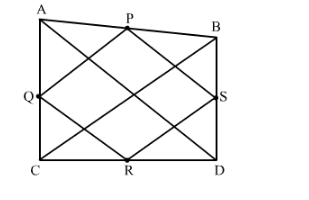ABCD is a quadrilateral in which AD = BC. If P, Q, R, S be the mid-points of AB, AC, CD and BD respectively, show that PQRS is a rhombus.
Given:
ABCD is quadrilateral in which AD = BC and P, Q, R, S are the mid points of AB, AC, CD, BD respectively.

To Prove:
PQRS is a rhombus.
Proof:
In ∆ABC, P and Q are the midpoints of the sides AB and AC respectively.
By the Mid point theorem, we get
PQ || BC and PQ = 12BC ...(1)
In ∆ADC, Q and R are the midpoints of the sides AC and DC respectively.
By the Mid point theorem, we get
QR || AD and QR = 12AD = 12BC (Since AD = BC) ...(2)
Similarly, in ∆BCD, we have
RS || BC and RS = 12BC ...(3)
In ∆BAD, we have
PS || AD and PS = 12AD = 12BC (Since AD = BC) ...(4)
From the equations (1), (2), (3), (4), we get
PQ = QR = RS = RS
Thus, PQRS is a rhombus.
Click here to get exam-ready with eSaral
For making your preparation journey smoother of JEE, NEET and Class 8 to 10, grab our app now.
